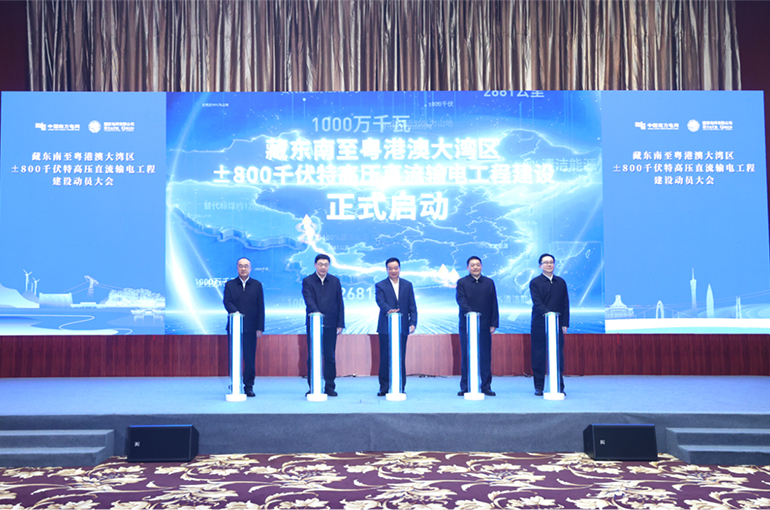 China Begins Work on World’s Largest Clean Power Line, Costing USD7.5 Billion
China Begins Work on World’s Largest Clean Power Line, Costing USD7.5 Billion(Yicai) Sept. 17 -- China kicked off construction on a massive ultra-high voltage direct current power line yesterday that will stretch from the Xizang Autonomous Region in the far west of the country all the way to the Guangdong-Hong Kong-Macao Greater Bay Area on the east coast. With a total investment of CNY53.2 billion (USD7.5 billion), it will be the world’s largest clean electricity direct current transmission line once complete.
The power line will run 2,681 kilometers across the country through major regions including Xizang, Yunnan province, Guangxi Zhuang Autonomous Region and Guangdong province. It will be able to carry up to 10 million kilowatts of power and is scheduled to come into operation in 2029, according to announcements made yesterday by grid operators State Grid Corporation of China and China Southern Power Grid.
Once in service, the power line will supply over 43 billion kilowatt-hours of clean electricity to the Greater Bay Area every year, around half the annual output of the Three Gorges Dam. This is equivalent to saving 12 million tons of standard coal consumption and to cutting greenhouse gas emissions by 33 million tons, the two firms said.
The project will also spur the development of new power equipment, attract more than CNY100 billion (USD14.1 billion) in investment into the wider industrial chain, the announcement said. In the process it is expected to create more than 100,000 jobs.
China started the West-to-East Power Transmission Project in the 1990s, aiming to take advantage of the abundant energy resources in the country’s western regions to meet growing demand in the industrialized east.
The Xizang Autonomous Region, which sits on the highest plateau in the world, is rich in hydropower, wind and solar energy. Over 99 percent of its electricity generation comes from clean sources, the highest proportion of any provincial-level region in the country.
Guangdong, the province with the biggest economy, consistently ranks first nationwide in terms of power consumption.
Xizang began sending electricity to other parts of China in 2015 and has delivered around 20 billion kilowatt-hours over the past decade. By 2050, Xizang will have more than 10 power transmission corridors exporting over 500 billion kilowatt-hours of electricity a year, the Xizang Daily reported earlier.
Editor: Kim Taylor